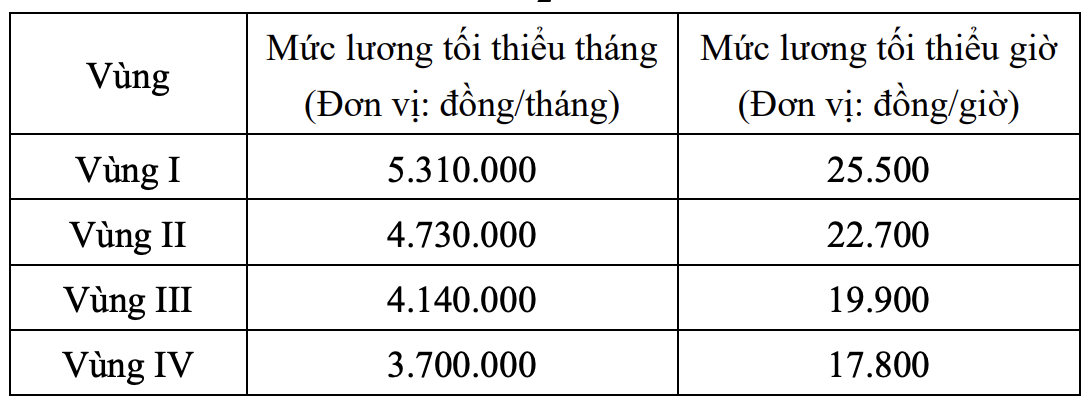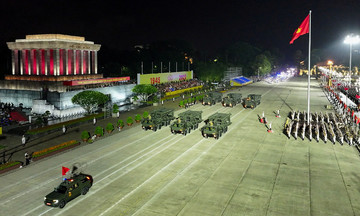According to the draft decree on minimum wages for employees working under contracts, developed by the Ministry of Home Affairs based on recommendations from the National Wage Council, the minimum wage in Region I is expected to increase from 4.96 million VND to 5.31 million VND per month. Region II will see an increase from 4.41 million VND to 4.73 million VND, Region III from 3.86 million VND to 4.14 million VND, and Region IV from 3.45 million VND to 3.7 million VND. Hourly minimum wages will be adjusted accordingly.
 |
Proposed minimum wage to be applied from 1/1/2026. |
The draft decree also stipulates that employers will apply the minimum wage of the region where their headquarters are located or where they operate. For businesses with branches or operations in industrial parks or export processing zones across multiple regions, the highest minimum wage among those regions will apply.
The Ministry of Home Affairs stated that the 6% increase in the minimum wage in 2025 helped improve the lives of workers. However, it wasn't enough to offset inflation, with the CPI projected to increase by an average of 3.7% annually between 2025 and 2026. Without further adjustments, by the end of 2026, the minimum wage would no longer ensure a minimum standard of living.
This proposed adjustment is also based on positive economic developments, such as GDP growth exceeding 7.5% in the first six months of the year, with a target of 8% or more for 2025. The labor market has also recovered steadily, and there are positive signs in production and business activities.
The Ministry of Home Affairs emphasized the need to closely monitor the actual situation after the administrative unit rearrangement and implementation of the two-tiered government system from 1/7/2025 when updating the areas where minimum wage applies.
 |
Workers starting their shift at Garment Company 10, February 2024. Photo: Ngoc Thanh |
Workers starting their shift at Garment Company 10, February 2024. Photo: Ngoc Thanh
The monthly minimum wage serves as the lowest basis for salary negotiations and payments for employees paid monthly. The same principle applies to hourly wages. Employees paid weekly, daily, per product, or on a piece-rate basis will have their wages converted to monthly or hourly equivalents, ensuring they are not lower than the stipulated minimum monthly or hourly rates.
Employers are prohibited from reducing wages for overtime, night work, or eliminating other benefits such as in-kind allowances. Policies already agreed upon that are more favorable to employees, such as a minimum wage 7% higher for those with professional qualifications, will continue to be maintained.
The International Labor Organization (ILO) in Vietnam reported that from 2015 to 2022, the nominal minimum wage increased from 119 to 168 USD. However, due to inflation, the real increase was negligible. Between 2020 and 2022, while the minimum wage increased by over 6%, real wages only increased by 0.7%.
The ILO recommends that wage adjustments be based on accurate data on inflation, growth, productivity, employment, and the affordability of businesses. Minimum wage increases must be sufficient to maintain the real value of income and meet the basic needs of workers and their families.
Hoang Phuong












